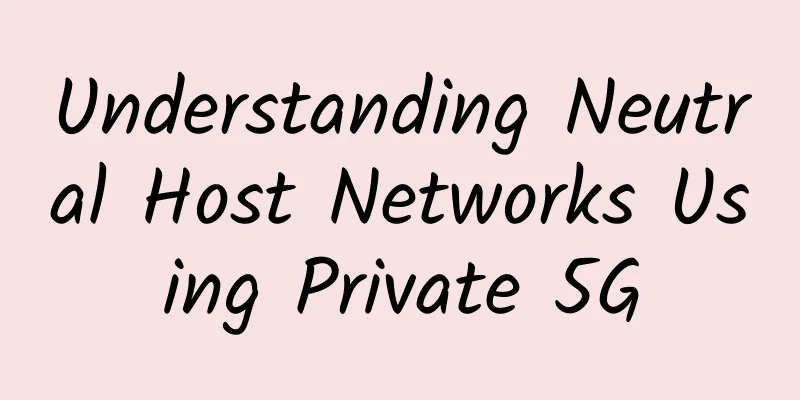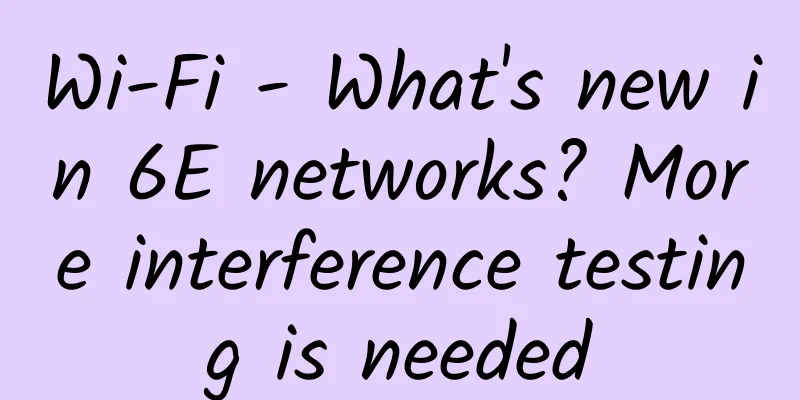Understanding Neutral Host Networks Using Private 5G

|
Enterprises have long faced wireless problems that traditional technologies like Wi-Fi can’t solve. Proprietary LTE and 5G on free-to-use spectrum, such as Citizens Broadband Radio Service or CBRS in the United States, can help solve some of these problems. Another compelling reason to use CBRS has recently emerged: neutral host networks. Neutral host networks are a cost-effective architecture that uses private 5G to extend public carrier cellular signals to locations or areas with poor signal strength. Here's what you should know about neutral host networking and what it can do for both small and large businesses. Improve cellular signal strengthSince the advent of smartphones, cellular voice and data networks have exploded, and access to these networks has become a necessity for businesses. But one of the drawbacks of cellular networks is limited signal penetration. When this problem occurs, carrier signals cannot reach certain areas within a company building or campus. One way companies can address this problem is by extending their carrier signal to areas with poor connectivity, said Srinivasan Balasubramanian, distinguished member of the CTO office and head of standards and IP at Celona. Companies have traditionally extended the signal by using signal boosters or distributed antenna systems (DAS). While these approaches work, they also have their drawbacks. According to Balasubramanian, boosters are only useful if the carrier signal is not distorted enough to be amplified. DAS, on the other hand, is a simpler way for businesses to extend the signal to all parts of a building, but it is too expensive for most businesses to deploy. “There are many cases where neither of these solutions can solve the problem, and this is where a neutral host can be very useful,” Balasubramanian said. What is a Neutral Host Network?Neutral host networking is a method of spreading public carrier network access over a privately deployed wireless network. The technology uses a building's internal switching architecture, along with private LTE or private 5G. Enterprises can connect to the carrier network over the internet through an encrypted tunnel. From there, network professionals can use the LAN in a building or campus and the 5G radio access network (RAN) to broadcast the signal over a dedicated channel, such as CBRS Band 48. Any CBRS-enabled cellular device can then access the public carrier network as if it were directly connected to it. How Neutral Host Networking WorksBalasubramanian said two or more mobile network operators (MNOs) can deploy a neutral host network by connecting to a corporate LAN through an encrypted IPsec tunnel over the internet. The tunnel terminates at a 5G RAN core gateway device. From there, the signal securely traverses the corporate LAN and reaches 5G RAN access points deployed throughout the building. The carrier signal is then extended throughout the building via the CBRS channel, and carrier traffic is carried across the corporate network using secure IPsec tunnels, Balasubramanian said. “To ensure operability and performance are maintained, key performance indicators are exchanged between the 5G RAN core and the service provider,” he said. Who Should Deploy Neutral Host Networks?New use cases for deploying neutral host networks are emerging. One reason an enterprise might consider deploying a neutral host network is when their facility needs a public carrier connection to perform operations, Balasubramanian said. For example, an enterprise could use a private 5G network internally and use a neutral host network to improve signal strength and capacity, he added. Another use case for neutral host networks he cited is granting employee or customer guest access to a common carrier network. Examples include university campuses, hospitals and public or private venues. “In these cases, public operator access via a neutral host network could be the primary driver for deploying private 5G networks, with the option to use a private RAN when these opportunities arise,” he noted. In the past, these enterprises would typically deploy DAS, he said. Now, they may prefer to use a neutral host network instead of 5G as a more cost-effective and flexible alternative. Neutral Host Network ProspectsIn the United States, neutral host networks have not yet been launched, but collaboration between private CBRS RAN manufacturers and national cellular operators is ongoing. For example, Celona is working with US operators to broadcast public carrier services over the CBRS band. Other MNOs are working to develop neutral host networks around the world. In Europe, for example, Ericsson is working with Proptivity to launch the first neutral host network as an indoor 5G service in Sweden later in 2022. |
<<: Network virtualization market development status in 2022
>>: Signaling analysis: Why did KDDI's major outage last for 60 hours?
Recommend
Where does the power of high-performance 5G core network come from?
The core network is the brain of the entire commu...
Neighbors and adjacencies in OSPF: a single word can lead to a huge difference
What you call a "neighbor" relationship...
Building 5G and expanding 4G: 2G/3G network withdrawal is in progress around the world
The COVID-19 pandemic has driven the demand for d...
Finding edge applications on 5G
5G is considered a key part of delivering edge co...
IBM acquires Red Hat. Will it be its rival, Google or Huawei? Let's wait and see.
Recently, IBM completed the acquisition of all is...
Cache + HASH = high concurrency? You think the high concurrency architecture is too simple!
[51CTO.com original article] In the Internet era,...
my country will promote 5G national standards in 2017 to speed up research and development and seize the right to speak in the industry
[[181162]] At the arrival of the new year, China&...
What can 5G messaging bring to industry customers?
5G messaging is planned and built based on the GS...
Linux common command find record
The tribe recorded some usage of the find command...
5G era: Will WiFi disappear from people’s lives?
WiFi has gradually penetrated into our daily live...
5G Ready: Enabling Technology to Prepare for the Future of Work
5G opens the door to major technological advances...
Can't catch the three-way handshake process? Then come and catch a packet with me!
Some time ago, I was busy with a robot communicat...
Fiber will play a key role in 5G development
CommScope recently said that in the future of bro...
The most worth buying mobile phone in the world, British media: Huawei P20 Pro!
Recently, Stuff, a well-known British technology ...
[11.11] Justhost offers a 30% discount for a limited time, with 22 data centers available in Russia, the United States, Singapore, etc.
Justhost.ru has released a limited-time discount ...









